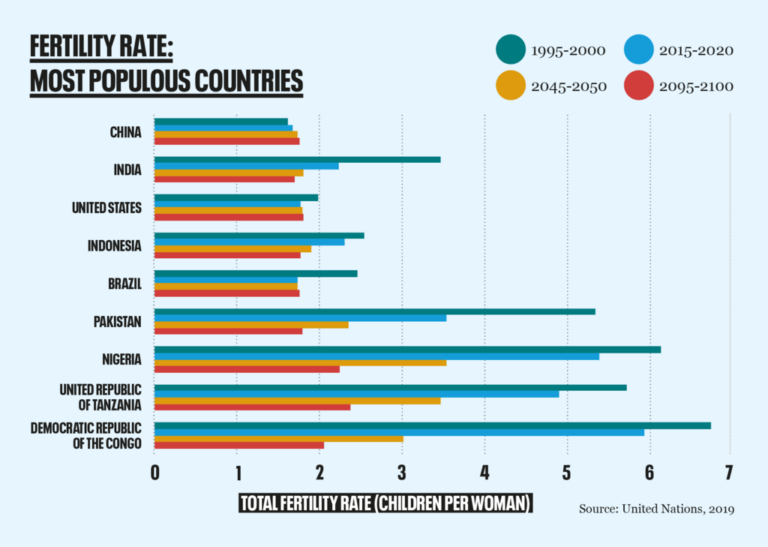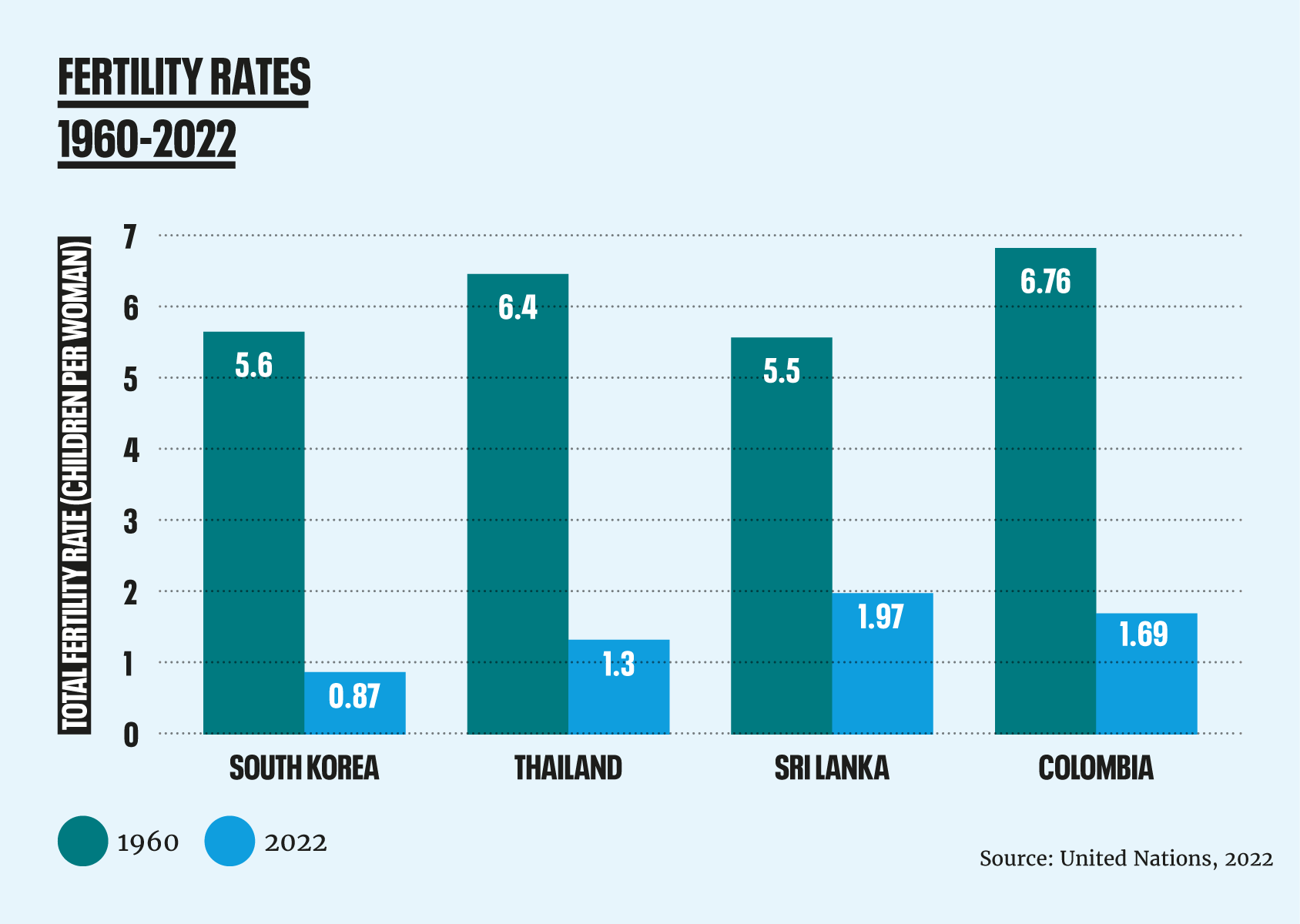
The Mystery of Demographic Momentum
Ever wondered why populations often continue to grow even when a country’s birth rate falls? Meet Demographic Momentum, a little-discussed phenomenon that’s essential to understand if we’re going to get to grips with population growth.
Demographic momentum (also known as population momentum) is like the hidden engine that drives population growth. Even if a country’s birth rates and family sizes drop, its population can still keep growing due to the age structure of the population. This means that the impact of smaller family sizes can sometimes take many decades to be reflected in population numbers.
Ages and stages
Every society obviously has people of all ages, from newborn babies to the very elderly. But the key players in demographic momentum are the young adults, those in their childbearing years. When there’s a large number of these young adults, even if they have fewer kids each on average (known as fertility rate), the sheer number of potential parents can mean more babies in total and ongoing population growth.
This means that countries with fertility rates below “replacement level” often continue to experience natural increases for some time. This is most common where birth rates have recently been high – when the babies born in that period reach adulthood they increase the number of families.

Today, we can see this clearly in countries like India. The average fertility rate (the number of births per woman) has reduced significantly in recent decades, from 5.9 in 1950 to below 2 today (2.1 is generally considered the replacement rate and, all other factors being equal, would eventually lead to a steady population). However, India’s population is still growing by over 10 million each year due to having a large number of young people (and people living longer), and earlier this year it overtook China as the most populous country in the world.
Demographic momentum is even more powerful in Africa. About half of the population of Africa is currently under 18. In most African countries fertility rates are coming down, but the sheer number of people moving into their child-bearing years will ensure a large number of births for decades to come. The UN projects that the continent will be where half of all global population growth takes place up to 2050.
Overall, the United Nations has concluded that “two-thirds of the projected increase in global population through 2050 will be driven by the momentum of past
growth”.
What to do about Demographic Momentum
Well, there’s nothing to be done about it per se. Eventually, a fertility rate below 2.1 will lead to a population shrinking. But we should understand that sustainably reducing the number of people on Earth can only be a good thing for people and planet. Governments and policymakers should focus on stabilising our population and, eventually, achieving a sustainable reduction and the solutions to getting there are clear:
Family Planning: Promoting family planning services and providing access to contraception can help individuals make informed choices about family size.
Education: Investing in education can empower women to make choices about their reproductive health and can contribute to lower fertility rates.
Healthcare: Access to quality healthcare, including maternal and child health services, plays a significant role in reducing birth rates.
Empowerment: Where women and girls are empowered and can choose what happens to their bodies, fertility rates inevitably fall.
Global justice: Escaping poverty is not just a fundamental human right but a vital way to bring birth rates down.

The Future Outlook
Demographic momentum holds significant implications for the future. As fertility rates fall below replacement level all over the world, countries with high levels of momentum must manage their growing populations but plan for the future, while others face the real, but not insurmountable, challenges of an ageing one.
In a world where we face complex and critical challenges such as climate change, understanding this phenomenon is crucial. It’s not just a numbers game; it’s about shaping the future and making informed decisions for the well-being of everyone.



